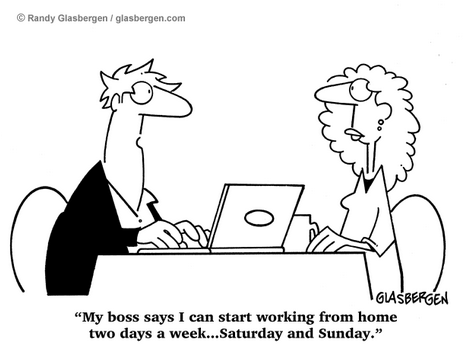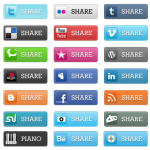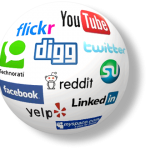 No, seriously! Perhaps you’ve come here looking for public relations help with your company or a job in the field, or maybe you simply stumbled across our blog (in that case, hello and welcome!). But either way, there’s a good chance you may find yourself asking that very question at one point or another.
No, seriously! Perhaps you’ve come here looking for public relations help with your company or a job in the field, or maybe you simply stumbled across our blog (in that case, hello and welcome!). But either way, there’s a good chance you may find yourself asking that very question at one point or another.
And you’re not alone. There’s a reason we have a dedicated Facebook page about the fact that explaining what we do can be tough – even for us folks in the industry!
I can’t tell you how many times I’ve fielded questions from people about “ads” or “articles” at personal gatherings and family functions when the inevitable job topic arises. I don’t think I’ve ever described it the same way twice; the definition may start off the same, but it usually ends up taking different paths each time, based on the audience and the types of questions they’re asking.
And rather than give a tactical rundown of a ‘typical’ days’ worth of activities (e.g. writing a press release or pitch, tweeting, calling media contacts, brainstorming during a messaging session, monitoring client and competitor news), it’s oftentimes more effective to address the actual purpose of our job – meaning raising awareness, shaping a brand, influencing demand, generating leads, and much, much more.
So, inspired by a recent Forbes article on the topic, we decided to tackle the topic ourselves. See below for a sampling of some of the PerkettPR staff’s perspective on wrangling the ever-evolving definition of PR and what it is we’re doing here:
“One of my favorite quotes having to do with the definition of PR is from Reader’s Digest, attributed to M. Booth and Associates: “If the circus is coming to town and you paint a sign saying ‘Circus Coming to the Fairground Saturday,’ that is advertising. If you put the sign on the back of an elephant and walk it into town, that is promotion. If the elephant walks through the mayor’s flower bed, that is publicity. And if you get the mayor to laugh about it that is public relations.’ But even though this definition drives at the heart of PR, what we do encompasses a whole lot more than that!”
“On a daily basis our roles are ever-changing and hard to define – from media relations, crisis communications, social media, copywriting, event coordination, C-level strategy sessions, reputation management, videography, web design, customer service, infographic creation, etc. But the one constant is the overarching common thread between them that stays the same – the value we add by earning people’s attention though a thorough understanding of our audience(s), well-crafted stories and good old-fashioned communication skills.”
“Public relations is a form of marketing where I utilize my writing and communication skills to make the public understand my company’s product or technology. It is my job to spread the word about the product or technology in a positive way to keep customers coming back again and again.”
“When I started in this business, I thought of my job as creating awareness. And while I think that’s still true, the way we accomplish this has changed dramatically. Now I tend to think of PR as a form of content creation. Whether it’s creating news via press releases; visuals such as infographics or video; events like Twitter chats or Google Hangouts; or creating community via engagement across social channels; these efforts and the resulting content combine to create awareness for our clients. Regardless of how we define PR and the role agency plays, there’s no doubt we play an important part in our clients’ success directly and indirectly.”
“Defining PR is no easy feat – especially as its definition is constantly evolving. Good PR, however, is the process of building relationships, creating conversations, influencing the news while shaping a company’s brand perception. It’s how a company engages, discusses and fosters positive awareness with the right audience at the right time using the right medium. PR is powerful, and Bill Gate’s summed it up the best when he said, ‘If I was down to my last dollar, I’d spend it on public relations.’”
Got anything to add to our descriptions of the PR function? We’d love to hear your thoughts in the comments below!
 Google updated its webmaster guidelines that target core PR practices around press releases. Silicon Valley journalist blogger and ZDNET contributor Tom Foremski weighs in on the negative impact this will have for the press release. Check out his take Did Google just kill PR agencies? to find out more on the updated rules on links and keywords in press releases and how they may affect your future release plans.
Google updated its webmaster guidelines that target core PR practices around press releases. Silicon Valley journalist blogger and ZDNET contributor Tom Foremski weighs in on the negative impact this will have for the press release. Check out his take Did Google just kill PR agencies? to find out more on the updated rules on links and keywords in press releases and how they may affect your future release plans. All marketing practitioners are seeking ways to save money and get a bigger bang for their budget buck. How to do that isn’t at all obvious. MarketingProfs‘ Ardi Kolah explains that sometimes the answer can be staring you in the face and offers 10 Ways to Stretch Your Marketing Budget
All marketing practitioners are seeking ways to save money and get a bigger bang for their budget buck. How to do that isn’t at all obvious. MarketingProfs‘ Ardi Kolah explains that sometimes the answer can be staring you in the face and offers 10 Ways to Stretch Your Marketing Budget
 I came across an interesting
I came across an interesting  No, seriously! Perhaps you’ve come here looking for public relations help with your company or a job in the field, or maybe you simply stumbled across our blog (in that case, hello and welcome!). But either way, there’s a good chance you may find yourself asking that very question at one point or another.
No, seriously! Perhaps you’ve come here looking for public relations help with your company or a job in the field, or maybe you simply stumbled across our blog (in that case, hello and welcome!). But either way, there’s a good chance you may find yourself asking that very question at one point or another. 
 Video is the undisputed darling of the marketing world in 2012. There are a variety of reasons web-based video is such an important media vehicle, and marketers that understand the nuances will be more successful than the laggards. To get started, Kent Lewis of
Video is the undisputed darling of the marketing world in 2012. There are a variety of reasons web-based video is such an important media vehicle, and marketers that understand the nuances will be more successful than the laggards. To get started, Kent Lewis of  Social media, although a relatively recent phenomenon, has become an increasingly more important part of marketing and client base development platform for businesses. What could once be accomplished by a traditional website now needs to be supplemented by a robust and responsive utilization of the tools social media offers. Forbes contributor Jessica Bosari explains
Social media, although a relatively recent phenomenon, has become an increasingly more important part of marketing and client base development platform for businesses. What could once be accomplished by a traditional website now needs to be supplemented by a robust and responsive utilization of the tools social media offers. Forbes contributor Jessica Bosari explains  Facebook Engagement is a critical issue for social marketers, not only because consumer interaction has become a cornerstone of the new marketing landscape, but also because Facebook Engagement is critically tied to brand visibility on the platform. Morgan J. Arnold at
Facebook Engagement is a critical issue for social marketers, not only because consumer interaction has become a cornerstone of the new marketing landscape, but also because Facebook Engagement is critically tied to brand visibility on the platform. Morgan J. Arnold at 







